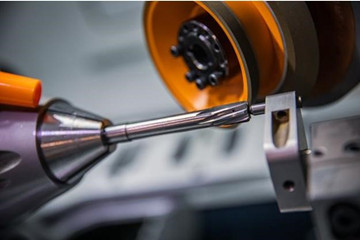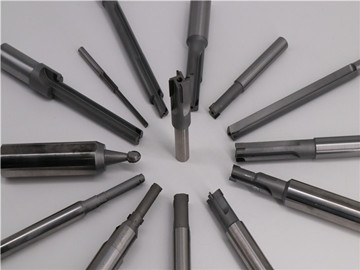

1. The aperture increases, the error is large
The design value of the outer diameter of the reamer is too large or the reamer has burrs; The cutting speed is too high; Improper feed rate or excessive machining allowance; The main deflection angle of the reamer is too large; Reamer bending; The cutting edge is adhered to the edge of the reamer; The edge swing of reamer during grinding is out of tolerance;Improper selection of cutting fluid; When installing reamer, the surface of taper shank is not clean or there is knock against the taper surface; Spindle bending or spindle bearing too loose or damaged; The reamer is not flexible to float; Uneven force of both hands when reaming makes the reamer shake left and right.
Appropriately reduce the outer diameter of the reamer according to the specific situation; Reduce the cutting speed; Properly adjust the feed rate or reduce the machining allowance; Reduce the principal declination angle appropriately; Straighten or scrap the bent unusable reamer; Control the swing difference within the allowable range; Choose a cutting fluid with better cooling performance; Before installing the reamer, wipe off the oil on the taper shank of the reamer and the taper hole of the spindle of the machine tool, polish the taper surface with oilstone; Adjust or replace the spindle bearing; Readjust the floating chuck and adjust the coaxiality; Pay attention to correct operation.
2. Aperture reduction
The design value of the outer diameter of the reamer is too small; The cutting speed is too low; The feed rate is too large; The main deflection angle of the reamer is too small; The cutting fluid is not selected properly; The worn part of the reamer is not worn off during sharpening, and the elastic recovery reduces the aperture; When reaming steel parts, the margin is too large or the reamer is not Sharp, easy to produce elastic recovery, so that the hole diameter is reduced; The inner hole is not round, and the hole diameter is unqualified.
Change the outside diameter of reamer; Increase the cutting speed appropriately; Reduce the feed quantity appropriately; Increase the principal declination Angle appropriately; Choose oily cutting fluid with good lubrication performance; Exchange reamer regularly and sharpen the cutting part of the reamer correctly; When designing the size of the reamer, the above factors should be considered, or the value should be selected according to the actual situation; For experimental cutting, take an appropriate margin, Sharpen the reamer.

3. Low service life of reamer
The material of the reamer is inappropriate; The reamer burns during sharpening; The cutting fluid is not selected properly, and the cutting fluid cannot flow smoothly to the cutting place; The surface roughness value of the reamer is too high after sharpening.
Choose the reamer material according to the processing material, you can use cemented carbide reamer or coated reamer; Strictly control the amount of sharpening cutting to avoid burns; Always choose the correct cutting fluid according to the processing material; Often remove the chips in the chip groove, and use enough the pressurized cutting fluid is finely ground or ground to meet the requirements.
4. The hinged hole position accuracy is out of tolerance
The guide sleeve is worn; The bottom end of the guide sleeve is too far from the workpiece; The length of the guide sleeve is short and the accuracy is poor; The spindle bearing is loose.
Regularly replace the guide sleeve; Lengthen the guide sleeve to improve the matching accuracy of the guide sleeve and the reamer gap; Repair the machine tool and adjust the spindle bearing gap in time.
5. Reamer tooth chipping
The reaming allowance is too large; The hardness of the workpiece material is too high; The cutting edge swing is too large and the cutting load is uneven; The main deflection angle of the reamer is too small, which increases the cutting width; When reaming deep holes or blind holes, too much chips, and not cleared in time; The teeth of the knife were worn out during sharpening.
Modify the size of the pre-processed aperture; Reduce the material hardness or switch to a negative rake angle reamer or a cemented carbide reamer; Control the swing error within the qualified range; Increase the entering angle; Pay attention to timely removal of chips or use a bladed angle reamer ; Pay attention to the quality of sharpening.
Comparison of ns, ps, and fs lasers for PCD, carbide, and ceramic machining, and how Moresuperhard’s 5-axis laser PCD grinding machine delivers high-precision cold laser processing.
Learn how to choose the right PDC cutters for deep and hard rock formations. Explore diamond thickness, thermal stability, impact toughness, cutter geometry, and bit design.
Add: Zhongyuan Rd, Zhongyuan District, Zhengzhou, 450001, Henan, China
Tel: +86 17700605088